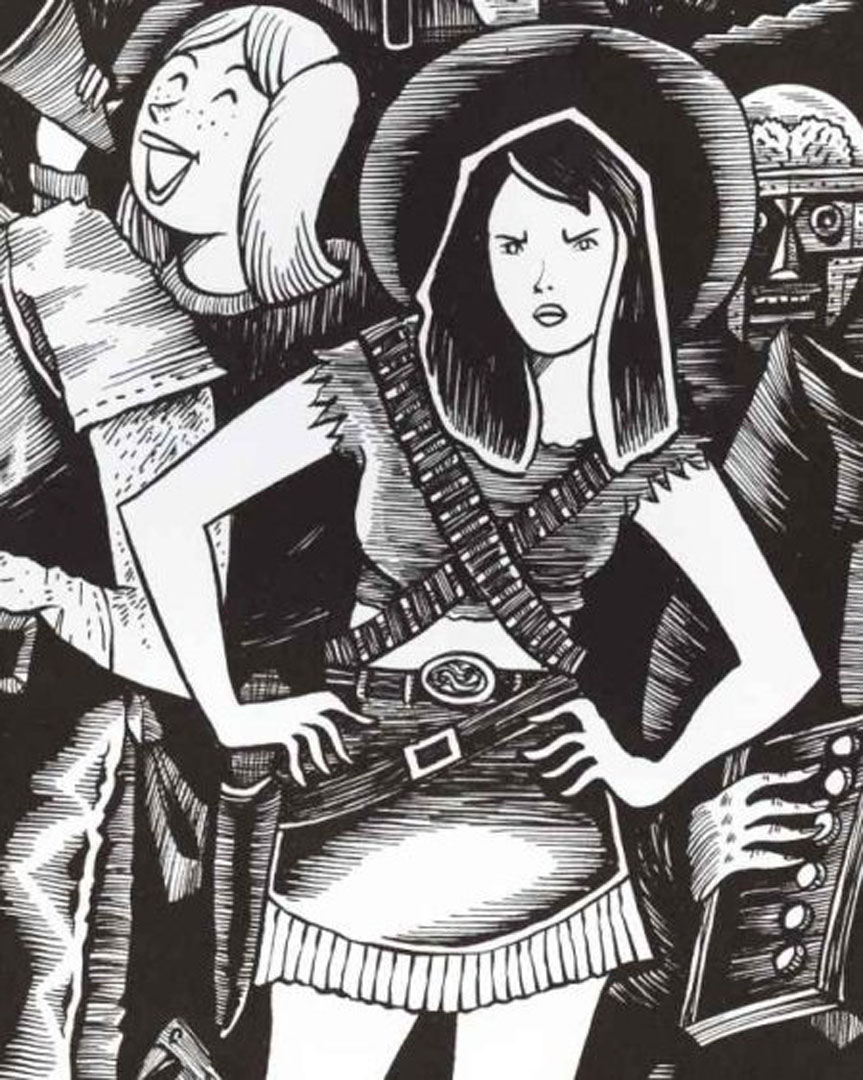“Dynamic 2D patterns for shading 3D scenes” by Breslav, Szerszen, Markosian, Barla and Thollot
Conference:
Type(s):
Title:
- Dynamic 2D patterns for shading 3D scenes
Presenter(s)/Author(s):
Abstract:
We describe a new way to render 3D scenes in a variety of non-photorealistic styles, based on patterns whose structure and motion are defined in 2D. In doing so, we sacrifice the ability of patterns that wrap onto 3D surfaces to convey shape through their structure and motion. In return, we gain several advantages, chiefly that 2D patterns are more visually abstract – a quality often sought by artists, which explains their widespread use in hand-drawn images.Extending such styles to 3D graphics presents a challenge: how should a 2D pattern move? Our solution is to transform it each frame by a 2D similarity transform that closely follows the underlying 3D shape. The resulting motion is often surprisingly effective, and has a striking cartoon quality that matches the visual style.
References:
1. Bousseau, A., Kaplan, M., Thollot, J., and Sillion, F. 2006. Interactive watercolor rendering with temporal coherence and abstraction. In NPAR 2006, 141–149. Google ScholarDigital Library
2. Brassard, L. 1998. The Perception of the Image World. PhD thesis, Simon Fraser University. Google ScholarDigital Library
3. Coconu, L., Deussen, O., and Hege, H.-C. 2006. Real-time pen-and-ink illustration of landscapes. In NPAR 2006, 27–35. Google ScholarDigital Library
4. Cunzi, M., Thollot, J., Paris, S., Debunne, G., Gascuel, J.-D., and Durand, F. 2003. Dynamic canvas for immersive non-photorealistic walkthroughs. In Proc. Graphics Interface.Google Scholar
5. Durand, F., Ostromoukhov, V., Miller, M., Duranleau, F., and Dorsey, J. 2001. Decoupling strokes and high-level attributes for interactive traditional drawing. In 12th Eurographics Workshop on Rendering, 71–82. Google ScholarDigital Library
6. Eissele, M., Weiskopf, D., and Ertl, T. 2004. Frame-to-Frame Coherent Halftoning in Image Space. In Proceedings of Theory and Practice of Computer Graphics 2004, 188–195. Google ScholarCross Ref
7. Freudenberg, B., Masuch, M., and Strothotte, T. 2002. Real-time halftoning: a primitive for non-photorealistic shading. In 13th Eurographics Workshop on Rendering, 227–232. Google ScholarDigital Library
8. Girshick, A., Interrante, V., Haker, S., and Lemoine, T. 2000. Line direction matters: An argument for the use of principal directions in 3D line drawings. In NPAR 2000, 43–52. Google ScholarDigital Library
9. Hertzmann, A., and Zorin, D. 2000. Illustrating smooth surfaces. In SIGGRAPH 2000, 517–526. Google ScholarDigital Library
10. Horn, B. K. P. 1987. Closed-form solution of absolute orientation using unit quaternions. Journal of the Optical Society of America 4, 4 (April), 629–642.Google ScholarCross Ref
11. Kalnins, R. D., Markosian, L., Meier, B. J., Kowalski, M. A., Lee, J. C., Davidson, P. L., Webb, M., Hughes, J. F., and Finkelstein, A. 2002. WYSIWYG NPR: Drawing strokes directly on 3D models. ACM Transactions on Graphics 21, 3, 755–762. Google ScholarDigital Library
12. Kaplan, M., and Cohen, E. 2005. A generative model for dynamic canvas motion. In Proceedings of Computational Aesthetics in Graphics, Visualization and Imaging, 49–56. Google ScholarCross Ref
13. Luft, T., and Deussen, O. 2006. Real-time watercolor illustrations of plants using a blurred depth test. In NPAR 2006, 11–20. Google ScholarDigital Library
14. Meier, B. J. 1996. Painterly rendering for animation. In SIGGRAPH 96, 477–484. Google ScholarDigital Library
15. Nehab, D., and Shilane, P. 2004. Stratified point sampling of 3D models. In Eurographics Symposium on Point-Based Graphics, 49–56. Google ScholarCross Ref
16. Ostromoukhov, V. 1999. Digital facial engraving. In SIGGRAPH 99, 417–424. Google ScholarDigital Library
17. Rost, R. J. 2006. OpenGL Shading Language, Second Edition. Addison Wesley Professional. Google ScholarDigital Library
18. Salisbury, M. P., Wong, M. T., Hughes, J. F., and Salesin, D. H. 1997. Orientable textures for image-based pen-and-ink illustration. In SIGGRAPH 97, 401–406. Google ScholarDigital Library
19. Webb, M., Praun, E., Finkelstein, A., and Hoppe, H. 2002. Fine tone control in hardware hatching. In NPAR 2002, 53–58. Google ScholarDigital Library
20. Winkenbach, G., and Salesin, D. H. 1994. Computer-generated pen-and-ink illustration. In SIGGRAPH 94, 91–100. Google ScholarDigital Library





